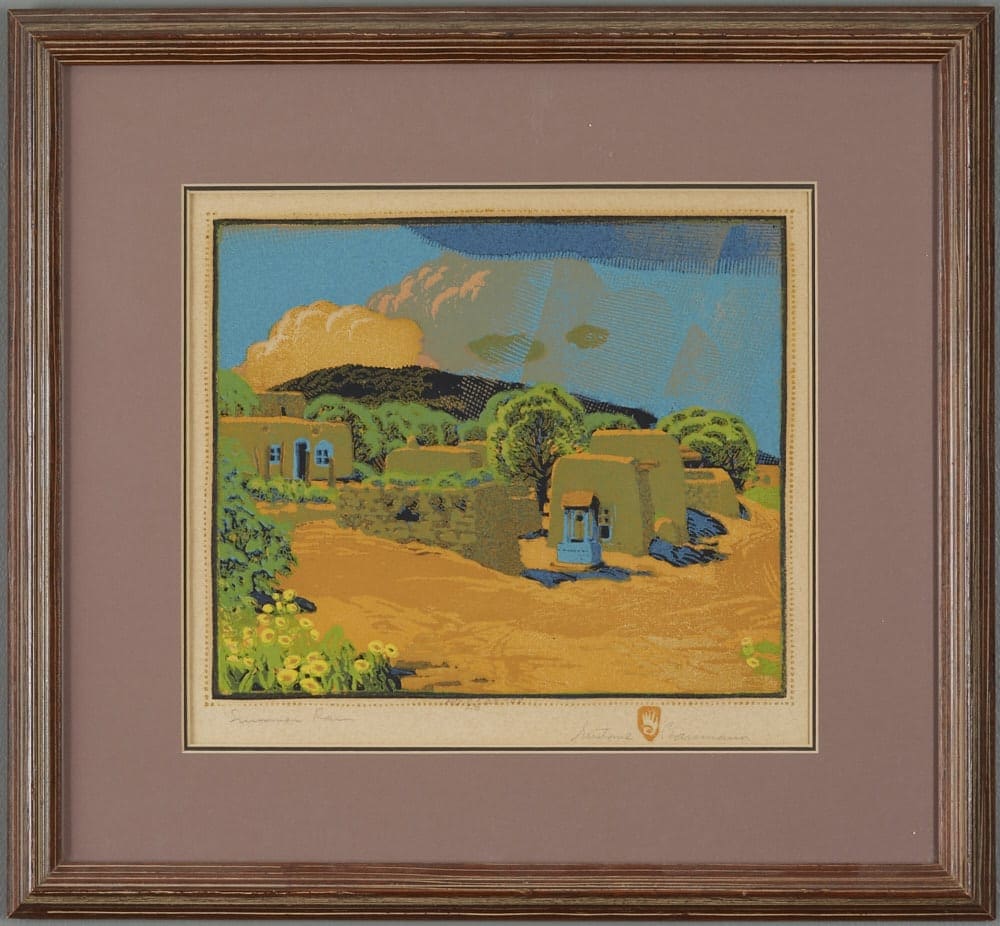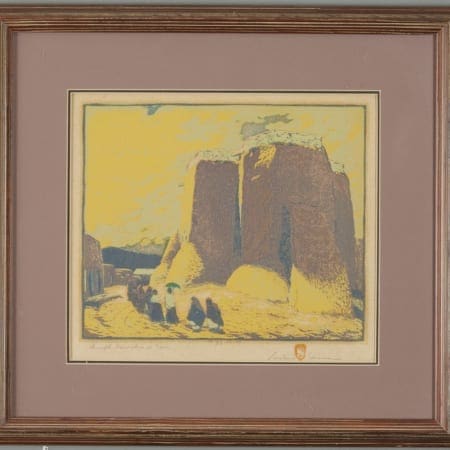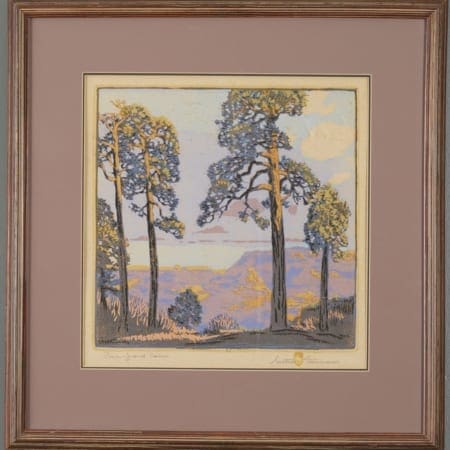
Gustave Baumann (1881-1971). Color woodblock print titled “Summer Rain.” Print is hand signed along the lower right and titled along the lower left. Number 26 out of 100.
Provenance: Albert Roullier Art Galleries, Chicago, Illinois.
Private collection, Minnesota.
Biography: Gustave Baumann was born in Germany in 1881. He immigrated to the United States with his family at the age of ten, ending up in Chicago. In Chicago, he apprenticed at an engraving company while studying at the Art Institute of Chicago by night. Following his studies, he began to work in advertising, opening his own firm in 1903. However, his true interest was always in art, so after saving enough money, he traveled to Germany to study at the Kunstgewerbe Schule, or School of Arts and Crafts. The meticulous craftsmanship taught at this school became a defining feature of Baumannís art throughout his career.
When he returned to Chicago, he immersed himself in his art, quickly gaining enough financial success that he was able to move out of the city to the countryside of Indiana, where he began creating woodblock prints based on the scenic landscapes he saw there. These works led to the beginnings of his international success, exhibiting at the Salon in Paris and winning various awards.
Beginning in 1917, Baumann traveled the United States, first visiting the East Coast and then heading west to New Mexico, where he intended to spend a summer with friends in Taos. Once there, however, Baumann fell in love with the New Mexico scenery. He spent all summer trying to capture it through sketches and prints, but felt he had not done it justice and needed more time to truly depict it well. A trip down to Santa Fe confirmed this feeling for him, and he decided to move there.
Baumann spent the next several years traveling throughout the Southwest, sketching the scenery and turning those sketches into prints, working in bright and distinctive colors to present the landscape as he saw it. As his prints gained more and more commercial and critical success, Baumann continued to stay close to his roots, working carefully and creating all of his prints unassisted. He slowed down both his traveling and his printmaking toward the end of the 1930s, but continued to create art inspired by old traditions and new landscapes until his death in 1971.
Sight; height: 11 in x width: 11 in.
Framed; height: 17 1/4 in x width: 18 3/4 in.
$9,500

